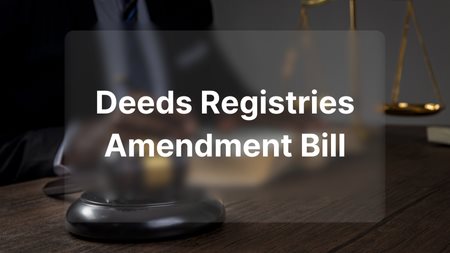After many months of searching for and agonising over properties, you finally find your dream home. You put in an offer, which is accepted, and happy days – your bond application is approved.
Keen to move in, you start packing your belongings in earnest. However, as I recently discovered, chances are you will have to park your enthusiasm (and your moving boxes) for a few months while the transfer and bond registration process plays out.
But what exactly does this process entail? For most people this can prove a confusing and frustrating process that drags on – seemingly – unnecessarily. Unfortunately it’s not something that can be sidestepped and it takes time to go through the proper channels.
Firstly, it’s important to understand that the transfer process entails more than just the transfer of the property from the seller to you. It also typically includes cancellation of the seller’s existing bond and registration of your new bond. Should your seller be purchasing a new home, a domino effect of sorts comes into play as there’s a good chance that this process will have to be repeated.
A number of steps can effectively be linked to your transaction in this way, which can delay matters more, as the properties have to be lodged simultaneously with the Deeds Office.
Sign for the sale
Once you as buyer have signed a deed of sale, the seller will present it to his chosen conveyancer. When your bond application is approved, your bank’s bond attorney will register the mortgage bond with the Deeds Office.
The conveyancer will then proceed to gather all the information and documentation necessary to transfer the property into your name. This includes the existing title deed of the property, any cancellation fees on the seller’s bond, outstanding rates and taxes and information pertaining to how the buyer will pay for the property. The conveyancer will also request a rates clearance certificate from the local municipality and a tax clearance certificate from SARS.
Your bond attorney will contact the conveyancers and advise them of the amount available for guarantees. The bond attorney will also request the draft transfer deed.
Seller must cancel
The conveyancer will request that the seller’s bond be cancelled upon receipt of a guarantee for the outstanding amount. Once the conveyancer has received the title deed, cancellation figures and other pertinent documentation, you and the seller can sign the transfer documents (which the conveyancer will walk you through). You will then have to pay the transfer and bond registration costs.
Following payment, the bond attorney and conveyancer will lodge the transfer and bond documents at the Deeds Office simultaneously. The Deeds Office will then vet the documentation and you will be advised when the matter is on “prep”, which means the property should register in your name within three working days. All financial arrangements are usually finalised within 24 hours of registration. The title deed and bond documents are then sent to the bank to keep as security.
Generally speaking the average transfer takes approximately three months to conclude. However, should complications arise it can take several months for the property to be transferred. It’s also useful to know that there may be various attorneys involved at different stages of the transfer and that different fees and expenses linked to the purchase price, bond amount and conveyancing services apply.




